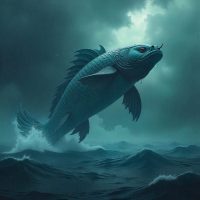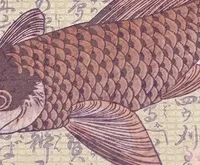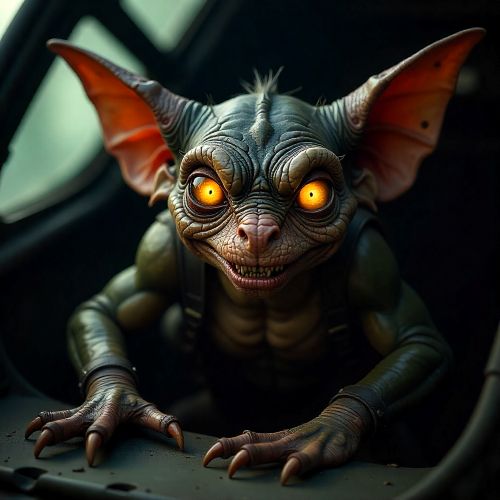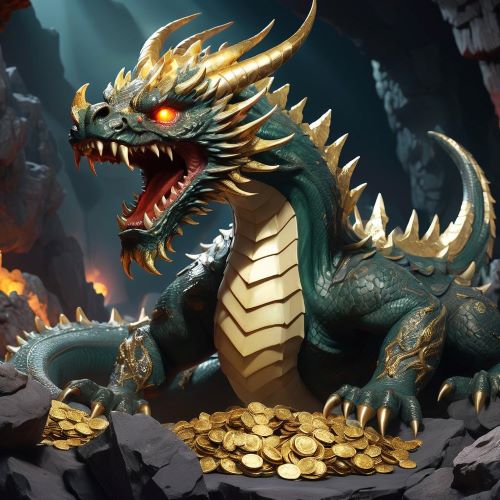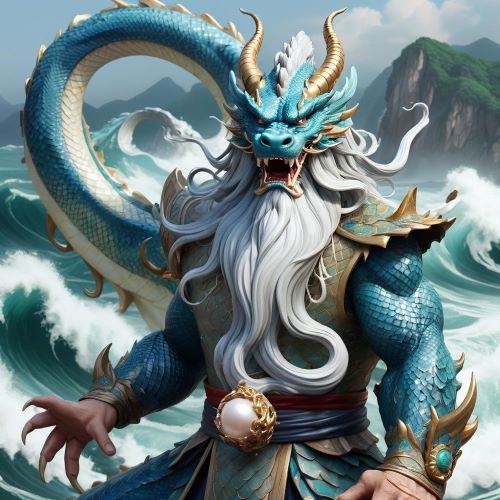Kun : The Mythical Giant Fish of Chinese Mythology
Listen
At a glance
| Description | |
|---|---|
| Origin | Chinese Mythology |
| Classification | Animals |
| Family Members | N/A |
| Region | China |
| Associated With | Transformation |
Kun
Introduction
Kun is one of the most iconic beings in Chinese mythology, introduced in the Daoist text Zhuangzi as a vast, mysterious fish inhabiting the Northern Sea. Its size is described as immeasurable, stretching across thousands of li, a detail intended not as zoological fact but as a poetic invitation to imagine the infinite. Kun’s significance lies not only in its immensity but in its extraordinary transformation into Peng, a colossal bird whose wings soar so high and wide they seem to shadow the sky. This metamorphosis, central to Zhuangzi’s philosophical vision, expresses the Daoist ideals of transcendence, spiritual freedom, and the capacity within all beings to move beyond their perceived limitations. Kun is therefore both a mythical creature and a philosophical symbol—an embodiment of boundless potential and the possibility of rising above the constraints of the world.
Physical Traits
Kun is depicted as a gigantic fish whose body defies conventional scale, a creature so large that even ancient sages could not measure its true dimensions. Zhuangzi describes its back as thousands of li across and its presence as something that churns the waters of the Northern Sea. Its scales, glossed in later commentaries as mirror-like or metallic, enhance the image of a being forged in the depths of the ocean—a symbol of the immeasurable, dark, and fertile unknown.
The transformation into Peng marks one of the most dramatic physical shifts in classical mythology. Kun becomes a bird of legendary scope, with wings compared to massive storm clouds sweeping across the sky. The flight of Peng reaches ninety thousand li, a number that Daoist scholars interpret not literally but metaphorically, suggesting spiritual ascent beyond worldly boundaries. Kun’s dual nature—fish and bird—captures the idea that physical form is not fixed but fluid, capable of radical evolution in harmony with the Dao.
Family
Kun is not associated with a traditional mythological family, lineage, or pantheon. Unlike dragons, immortals, or celestial beings, Kun is presented more as a cosmic force than a creature with parents or offspring. Its origin in the “Northern Darkness” (北冥 Beiming), a realm described as an endless ocean, situates it within a primordial space rather than a genealogical line.
Scholars often interpret Kun’s “family” as conceptual rather than biological. Its connection to Peng—its transformed state—is its primary relational identity. The pair exists as two expressions of the same being, offering a model of natural transformation rather than familial continuity. Within Daoist thought, everything arises from and returns to the Dao, and Kun’s solitary nature reflects the notion that ultimate transformation comes from internal rather than inherited forces.
Other names
Kun is known in Chinese as 鯤 (or 鲲 in simplified form), a character historically used to describe large or mythical fish. Its transformed form, Peng (鹏), is equally significant in Chinese literature and has become a general symbol of great ambition or vast aspiration.
Together, the creature is sometimes referred to as Kunpeng (鲲鹏), emphasizing its unified identity as a being that transcends form. In some East Asian traditions, especially in Korea, Kun appears in the transliterated form “Gon,” showing how the myth travelled and evolved beyond China. The name Dapeng (大鹏) is occasionally used to emphasize the might and scale of the Peng form, especially in medieval Chinese literature. These variations reflect the myth’s cultural diffusion and the enduring fascination with its transformative symbolism.
Powers and Abilities
Kun’s primary power is its ability to transform into Peng, a shift that symbolizes spiritual elevation and liberation from earthly constraints. This metamorphosis illustrates the Daoist teaching that all beings embody latent potential, capable of rising to unimaginable heights when aligned with the natural currents of the universe.
As a fish, Kun moves effortlessly through the vast and shadowy waters of the Northern Sea, representing mastery of the unknown and the ability to navigate complexity with clarity. As Peng, its powers expand into the realm of air. It rides the great winds of heaven, soaring across tens of thousands of li in a single journey. Its immense wings allow it to travel beyond ordinary limits, becoming a metaphor for persistence, unbounded ambition, and the pursuit of enlightenment.
Modern Day Influence
Kun remains an influential figure in modern culture, far beyond ancient Daoist texts. In contemporary Chinese literature, the Kun-Peng transformation is frequently referenced to describe individuals who experience extraordinary personal growth or overcome overwhelming adversity. The phrase “鹏程万里” (a Peng’s journey of ten thousand li) remains a popular blessing for academic or professional success.
The symbolic power of Kun extends into technology and branding, where names like “Kunpeng” are used to evoke innovation, strength, and limitless potential. In games, anime, and digital narratives, Kun often appears as a majestic sea creature or a mysterious primordial entity. Its transformation into Peng continues to inspire visual artists, who depict it as a creature of vast beauty and cosmic significance. Through these modern interpretations, Kun retains its role as a timeless emblem of transformation, possibility, and the expansive nature of human imagination.
Related Images
Source
Graham, A. C. (1981). Disputers of the Tao: Philosophical Argument in Ancient China. Open Court Publishing.
Mair, V. H. (1994). The Columbia History of Chinese Literature. Columbia University Press.
Schafer, E. H. (1967). The Golden Peaches of Samarkand: A Study of T’ang Exotics. University of California Press.
“Kun and Peng: Mythic Beasts of Boundless Transformation.” (2025, June 30). Gods & Monsters. https://godsandmonsters.info/kun-peng/
“Kunlun (mythology).” (2012, June 10). Wikipedia. https://en.wikipedia.org/wiki/Kunlun_(mythology)
Wikipedia contributors. (2025). Peng (mythology). In Wikipedia. Retrieved from https://en.wikipedia.org/wiki/Peng_%28mythology%29
Myth and Folklore Wiki. (n.d.). Kun. Retrieved from https://mythus.fandom.com/wiki/Kun
Frequently Asked Questions
What is Kun in Chinese mythology?
Kun is a massive mythical fish described in the Daoist text Zhuangzi, known for transforming into the giant bird Peng.
What does the Kun-Peng transformation symbolize?
It represents transcendence, spiritual liberation, and the boundless potential within all beings.
How big is Kun according to mythology?
Kun is said to be thousands of li across, an immeasurable size used metaphorically to express infinite possibility.
Does Kun belong to a mythological family or pantheon?
No, Kun is portrayed as a solitary, cosmic entity without familial ties, emphasizing its symbolic and philosophical role.
How is Kun represented in modern culture?
Kun appears in literature, anime, technology branding, and modern art as a symbol of ambition, growth, and transformation.


